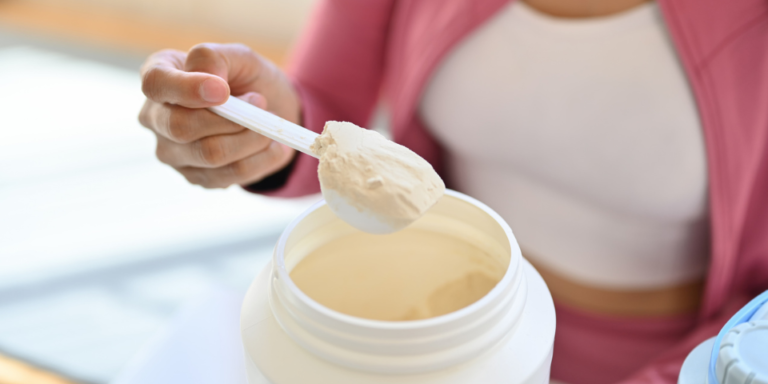You probably know that protein is an important part of the muscle building process. But this macronutrient matters more than you think. It also plays an essential role in recovery and indeed bone health.
While the majority of protein should come from whole food sources such as beef, chicken, fish, eggs, dairy and beans, good Protein powder can provide high-quality protein in a concentrated, more convenient form.
And whey protein is considered the gold standard because it has all the amino acids your body needs to fuel muscle gain and repair, making it a “complete” protein.
Understanding that whey is an excellent choice is quite simple. But before you reach for any old whey powder, the details make all the difference in making sure you’re giving your body what it needs—and won’t rip you off.
Here’s what you need to know about whey protein isolate versus concentrate — and how each type of whey protein can play a role in an athlete’s diet.
What is whey protein?
Whey comes from milk and is a by-product of the cheese-making process: Enzymes are added to milk to separate the liquid from the curd. After the curds are drained, the liquid left over is the whey.
This liquid was originally considered a “waste” product. Then supplement manufacturers realized that whey could be used as a high-quality, valuable protein.
Because whey production is a multi-step process, there are different variations. Whey protein is primarily offered as two different variants: whey protein concentrate and whey protein isolate.
Knowing the difference (and what to look for on a label) will ensure you get the most out of your protein supplements.
Whey Protein Isolate vs. Concentrate: What Are the Differences?
The main difference between whey protein isolate and whey protein concentrate is the protein content.
Whey protein concentrate is the most common form of whey protein. To understand how whey protein concentrate is processed, imagine whey falling from a conveyor belt into buckets. All you need to do is filter out the impurities, dehydrate it, flavor it and call it ‘Delicious Chocolate Whey Concentrate’. (Coming soon to a supplement store near you!) Some supplement companies may put more than this in their concentrates, but it’s not required.
This means that whey protein concentrate can vary widely in protein content. Whey protein may be labeled as “concentrate” if 25 to 89 percent of its content by weight it is protein. So if you remove 100 grams of protein powder, it can be called whey protein concentrate if between 25 and 89 grams is protein.
Whey protein isolate — found in Beachbody Performance Recover — should be at least 90 percent protein by weight. If you remove 100 grams of whey isolate, you will get 90 grams or more of protein – a significant difference compared to concentrate.
Are there other types of whey protein?
Another type of whey protein you may hear about is whey protein hydrolyzate. This type of whey protein was partially decomposed by acid and high heatfacilitating digestion. (For this reason, it is commonly used in baby formula.)
Hydrosols are absorbed faster than isolates, but there is there is no strong evidence to suggest that faster speed has some added benefit for muscle growth or recovery.
What are the benefits of each type of whey protein?

Most research into protein powders has found whey protein to be the way to go muscle growth. Whey protein contains an ideal blend of essential amino acidsand when taken regularly, whey protein can produce results.
But there are some unique benefits to each type of whey protein.
Concentrates tend to be the cheapest sources of protein supplements. This does not mean that the product is low quality, but it does mean that it is not the highest purity for a protein powder.
Whey isolates tend to command a higher price than concentrates for four reasons:
- Protein quality. Because it’s a purer form of protein, you get a higher protein-to-calorie ratio.
- Protein purity. Whey protein isolate filters out the rest of the macronutrients, meaning you have less carbs, sugar and fat.
- Digestion. Whey protein isolate usually has less than one percent lactosemeaning it’s easier on your stomach if you’re lactose intolerant.
- Improved blendability. Whey protein isolate has better solubility, which tends to make it a smoother, tastier protein smoothie.
What is the best whey protein for you?
Both whey protein concentrate and whey protein isolate have significant benefits, but whey protein isolate is a purer form of whey protein and has a higher percentage of protein — sometimes very higher — than whey concentrate.
If you buy a concentrate, you are likely getting a protein that is only 25 percent protein by weight.
Whereas if you use whey protein isolate, you’re getting 90 percent protein by weight — so you’ll know you’re getting all the protein and amino acids you need to boost your protein intake and help support your fitness goals.
